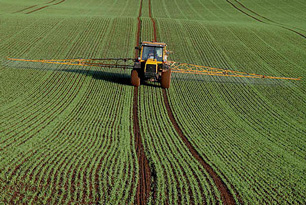Parathion (Ethyl Parathion)

Parathion (also known as ethyl parathion) is an insecticide used in agriculture on cotton, fruits, nuts and vegetables. Originally developed in Germany, it has been in use since the 1940s, though due to its toxicity it is not commonly used today and is banned in many countries.
It is not often detected in water, and human exposure is generally expected only through trace amounts found as residue on food crops.
Health Effects of Parathion (Ethyl Parathion)
Parathion is highly toxic with acute exposure, inhibiting the enzyme cholinesterase and causing a number of neurological symptoms. The World Health Organization classifies it as “extremely hazardous” and the EPA considers it to be “among the most highly toxic chemicals registered.” They list several of its toxic effects:
Acute exposure of humans to parathion may result in nausea, vomiting, abdominal cramps, diarrhea, excessive salivation, headache, weakness, difficult breathing, blurring or dimness of vision, convulsions, central nervous system depression, paralysis, coma, and respiratory failure.
Long term exposure can lead to changes in red blood cells and liver damage. Studies regarding its carcinogenity are limited, but the EPA classifies it as a “possible” human carcinogen, noting that its toxic effects occur at levels far below its carcinogenic effects.
Water Treatment for Parathion (Ethyl Parathion)
According to Lenntech, activated carbon has a “very high probability” of adsorbing parathion. The EPA recommends hydrolysis for treatment.
Sources: EPA, EPA (2), EPA (3), WHO, Pesticide Action Network, Lenntech, Wikipedia, Photo: geograph.org.uk, author: Walter Baxter
Site Index
Filtration Systems
- Aeration for Iron & Sulfide
- Backwashing Filters
(whole house & well units)
- Chlorine & Chemical Injectors
- Countertop Water Filters
- Emergency Filters
- Garden Hose Filters
- Reverse Osmosis, Residential
- Reverse Osmosis, Commercial
- Shower Filters
- Specialty Filters
- Ultraviolet Systems
- Undersink Filters
- Water Softeners
- Whole House Filters
Cartridges
Parts
- Replacement Parts
- Faucets
- Filter Media
- Fittings
- Housings
- O-rings
- Pumps
- Pura UV
- R.O. Parts
- R.O. Tanks
- R.O. Booster Pump
- VIQUA UV